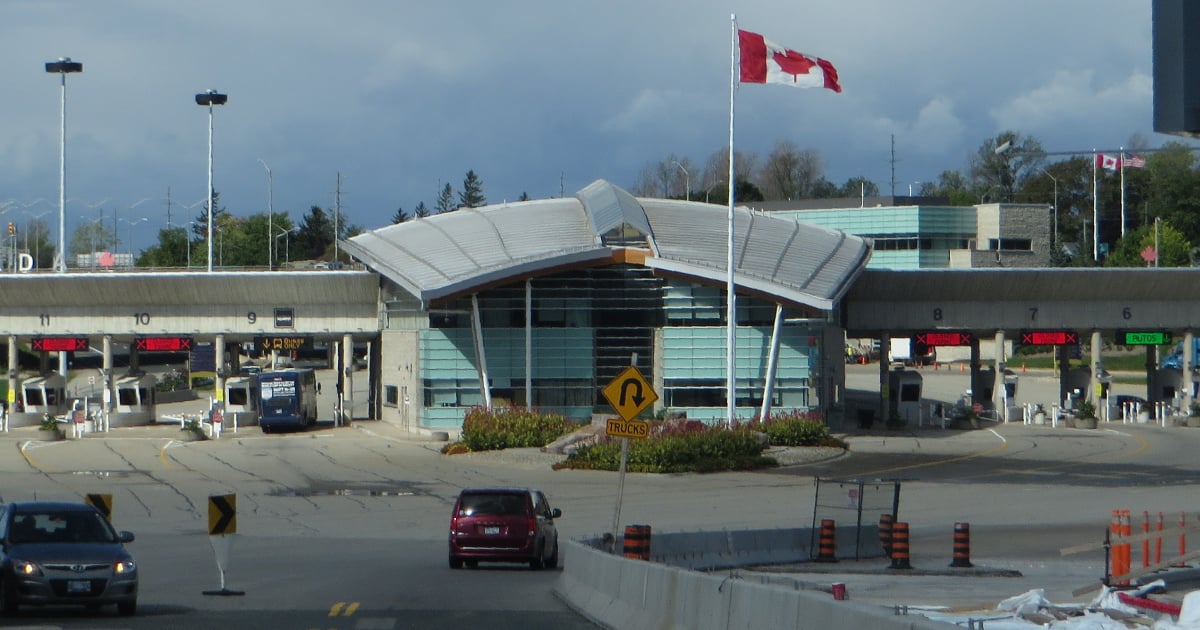Three Cuban migrants were apprehended and subsequently returned to the United States after making an unauthorized crossing into Canada, Canadian authorities stated on Thursday. The incident occurred on April 13, when the three individuals were discovered crossing the border via the Fort Erie rail bridge in Ontario, as a vehicle awaited them on the Canadian side, according to a statement released by the Royal Canadian Mounted Police (RCMP).
One migrant was captured immediately, while another attempted to flee on foot but was later apprehended. The third individual managed to enter the waiting vehicle, which sped away, nearly striking several members of the RCMP's Border Integrity Team who had responded to the scene.
According to the press release, the migrant who initially escaped and the driver of the vehicle, identified as the man's wife, surrendered to the authorities on April 23. The Cuban national, Alexander Cárdenas, was taken to the Peace Bridge port of entry in Fort Erie. After an assessment by the Canada Border Services Agency (CBSA), he was returned to the United States for failing to meet Canadian entry requirements.
His wife, Yenny Justo, who was driving the vehicle, was arrested and faces charges of dangerous operation of a vehicle, as outlined in section 320.13 of the Canadian Criminal Code; conspiracy, and failure to report under the Customs Act, as stipulated in Art. 465(1)(c) of the same code. Justo was held to appear at a bail hearing in the St. Catharines court. The statement did not specify her nationality, though she is presumed to be Cuban.
The Fort Erie rail bridge spans the Niagara River, linking the Canadian city with Buffalo, New York. This region, near the famous falls, has historically seen Cuban migrants crossing into the U.S., rather than the opposite. However, it is possible the detained group sought entry into Canada to avoid potential detention and deportation from the U.S., given the stringent anti-illegal immigration measures enforced by former President Donald Trump's administration.
In February, Cuban border crossings into the U.S. saw a significant decline, with only 150 entries recorded, as per the U.S. Customs and Border Protection (CBP) data. Of these, a mere 12 were reported along the Canadian border. During the initial 100 days of his second term, Trump ramped up his immigration crackdown, resulting in 65,682 undocumented immigrants being deported.
On May 1, Canadian authorities emphasized that the Niagara-on-the-Lake RCMP Border Integrity Unit maintains 24/7 patrols of the rail bridge by land, water, and air. Consequently, numerous individuals attempting illegal crossings have been arrested, processed under the Immigration and Refugee Protection Act (IRPA) by the CBSA, deemed inadmissible to Canada, and sent back to the United States.
Abeid Morgan, director of the CBSA's Intelligence and Enforcement Operations Division, praised the "diligent efforts" of the agency's interior enforcement team, whose "strong collaboration" with the RCMP led to the identification and capture of those involved in this incident.
Key Questions on Cuban Migration and Border Security
Why were the Cuban migrants deported back to the U.S.?
The migrants were sent back to the U.S. because they did not meet Canada's entry requirements, as determined by the Canada Border Services Agency.
What charges does Yenny Justo face?
Yenny Justo is charged with dangerous operation of a vehicle, conspiracy, and failure to report under the Canadian Customs Act.
What measures are in place to prevent illegal border crossings?
The Niagara-on-the-Lake RCMP Border Integrity Unit conducts continuous patrols by land, water, and air to deter illegal crossings, supported by the CBSA's enforcement efforts.
